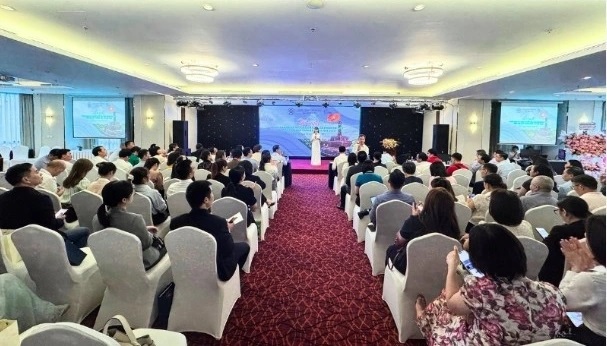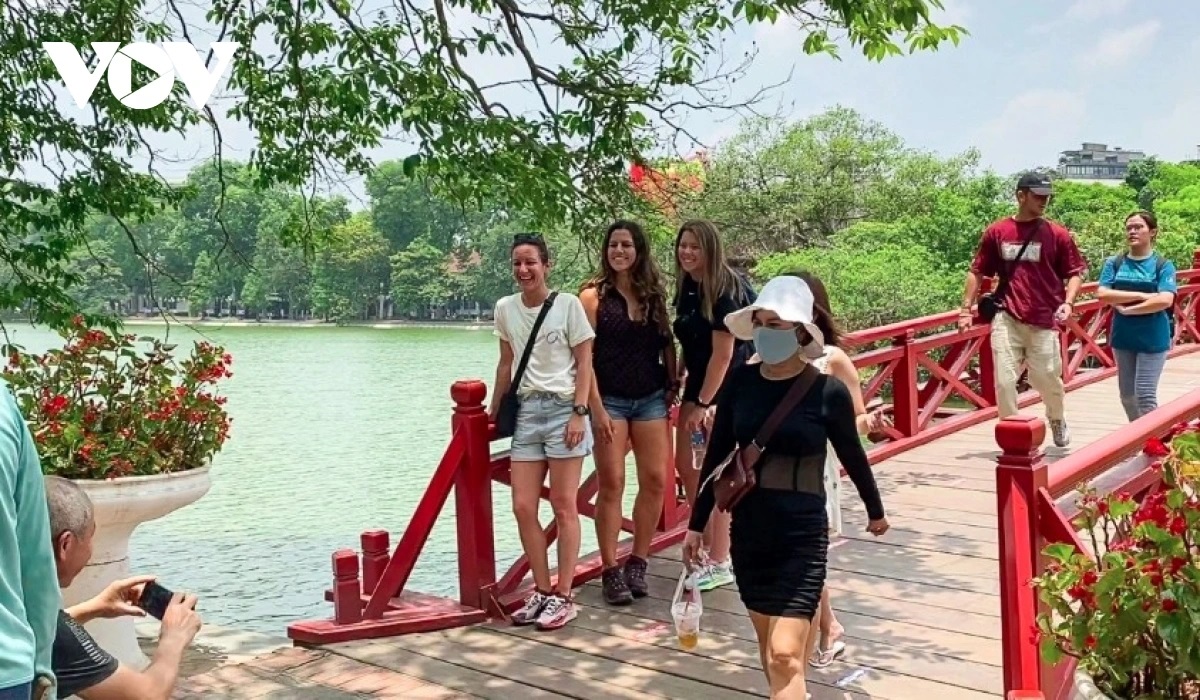
Overview of the conference (Photo:baodautu.vn)
The Hanoi Department of Tourism on June 26 held a conference to roll out its 2025 tourism stimulus plan, introducing a range of new products designed to fuel travel demand for the peak holiday season around National Day on September 2.
According to tourism sector data, the number of accommodation-related searches for Hanoi has surged more than 44 times year-on-year.
Speaking at the event, Tran Trung Hieu, Deputy Director of the Hanoi Department of Tourism, said the city is focusing on developing new tourism products, expanding experience spaces, and ramping up communication efforts to attract a large influx of visitors during celebrations for the 80th anniversary of the August Revolution and National Day.
Hanoi is entering a “golden window” for accelerating both visitor volume and service quality. During the six-month period, the capital is estimated to have welcomed 15.55 million visitors, up nearly 12% compared to the same period last year. Of these, 3.66 million were international arrivals (up 21.8%) and about 11.9 million were domestic travelers. Total tourism revenue exceeded VND 62 trillion, a rise of nearly 15%.
Hanoi has also gained growing international recognition, ranking among the Top 3 most popular destinations globally (TripAdvisor), Top 25 all-time favorite destinations, and Top 11 most attractive cities in the world (Time Out). “We are proud not just of the numbers, but of the way Hanoi is transitioning from a traditional destination into one with greater depth, creativity, and experiential diversity,” Hieu said.
At the conference, the department announced a group of more than 20 new night tourism offerings, including the program “The Bell of Tran Vu” at Quan Thanh Temple-a spiritual and cultural space reimagined for the evening, set to become signature experiences for both international and local visitors.
Additionally, two upcoming cultural routes-“Nam Thang Long Heritage Road” and “Scholarly Pathway” set to launch in August, will take visitors through historical sites, temples, and ancient villages tied to Hanoi’s educational and cultural legacy. Hieu described these as a “fusion of heritage depth and modern-day experience,” reflecting Hanoi’s distinctive approach to tourism innovation.
Other creative offerings include the nostalgic “Subsidy-era Route” through Truc Bach Street, an old train car, and a curated space dubbed “Leng keng heritage”; and an immersive tour of the Dao people’s traditional herbal medicine village in Ba Vi, both aiming to establish new, culturally distinct “check-in spots” in the capital.
Hieu also noted that this year’s tourism stimulus program will utilize Hanoi’s transport advantages to shape new regional tourism corridors. River routes along the Hong and Duong rivers have been mapped out to connect Hanoi with Hung Yen, Nam Dinh, Bac Ninh, and Hai Duong. On the railway front, the city is launching a series of high-quality night trains, including the Sjourney train, the Flame Tree Express (a Hanoi–Haiphong culinary tour), and the “Five City Gates” train starting from August 19.
In aviation, the department has signed a strategic cooperation agreement with Vietnam Airlines for the 2025–2030 period, aimed at jointly promoting Hanoi’s tourism, launching new international routes, and coordinating in-flight marketing efforts.

“Hanoi’s tourism space is no longer limited to the inner city. We are extending experiences to suburban districts such as Ba Vi, My Duc, and Soc Son, and further into the capital region. This is how we encourage longer stays and higher visitor spending,” Hieu said.
Beyond products and promotion, Hieu also emphasized the role of new institutions and urban planning in creating momentum for Hanoi’s tourism development. The revised Capital Law is opening new space for the city to establish dedicated cultural and tourism zones, such as creative centers, commercial and cultural districts, night-time precincts, and expanded pedestrian areas.
Several large-scale projects slated for completion between 2025 and 2026 will also help reshape the city’s tourism landscape. These include the National Exhibition Center, Kim Quy Park in Dong Anh, the Soc Son horse racetrack, upgrades to the areas around Hoan Kiem Lake and the Ho Chi Minh Mausoleum, and a wave of new luxury hotels coming into operation. “All of this will form a new façade for Hanoi tourism, more modern, more appealing, yet still grounded in the soul of the city’s cultural heritage,” Hieu said.
Also speaking at the conference, Nguyen Huu Viet, Deputy Director of the Hanoi Tourism Promotion Center under the Hanoi Department of Tourism, said the city would intensify destination marketing through a series of signature events and festivals with strong experiential appeal.
A highlight will be the Hanoi Tourism Festival 2025 themed “Experience Hanoi 2025,” to be held at the Thang Long Imperial Citadel. The event will showcase new tourism offerings, craft villages, cuisine, and site inspection tours. Notably, it will also feature a seminar on developing Halal tourism, an increasingly promising market Hanoi is actively targeting.